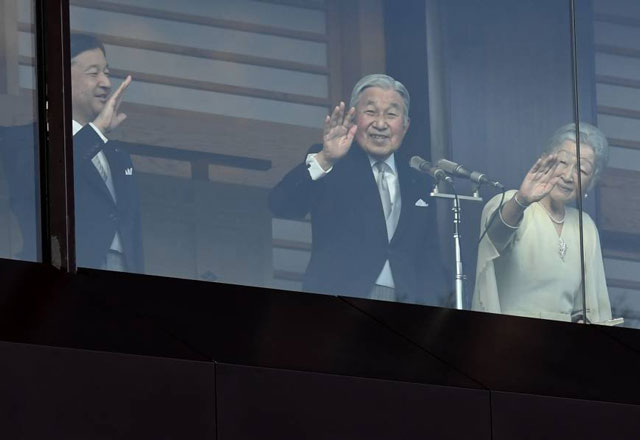
Paris, France | AFP | Emperor Akihito ascended to the Japanese throne on November 12, 1990 in a tightly choreographed ceremony steeped in tradition but with hints of modernity.
Akihito, aged 56, had already succeeded his father, Emperor Hirohito, immediately on his death the previous year after the longest reign in Japan’s history.
His official enthronement ceremony took place at the end of a long period of mourning and in the presence of 2,500 dignitaries including royalty from around the world.
It was the first such event under Japan’s post World War II pacifist constitution in which the emperor was no longer revered as a “living god”, becoming only “the symbol of the state and of the unity of the people.”
Ahead of Akihito’s April 30 abdication in favour of his son, here is an account — based on AFP’s reporting from the time — of the day that he took the throne.
– Ancient tradition –
In a break with the past, the Chrysanthemum Throne had been moved for the occasion to Tokyo from the former imperial capital of Kyoto, where all previous enthronements had taken place.
Installed in the Imperial Palace, the large octagonal black-and-gold structure, topped by a great golden phoenix, had next to it a slightly smaller throne for Empress Michiko.
They overlooked an internal court adorned with two rows of banners under which were lined up 20 imperial guards, 40 bearers of ceremonial objects and 12 gong and drum players, an AFP report described.
The ceremony lasted half an hour, starting when members of the imperial family, wearing traditional layered costumes, slowly entered the throne room.
Only Akihito’s mother, the Empress Dowager, was absent, being ill.
Akihito was the last to enter. He wore a ceremonial costume whose form has not changed since Japan’s Heian period (8-12th centuries) and is made up of multiple layers of silk robes and a black headdress.
Michiko, who arrived just ahead of her husband, wore a “junihitoe”, a multi-layered kimono weighing nearly 10 kilograms (22 pounds).
– Foreign royals –
“It is a bit like Japan has returned to the Heian era,” one impressed guest said.
Among the nearly 500 foreign dignitaries in attendance were about 70 heads of state and 20 prime ministers as well as US vice president Dan Quayle.
In the front row were Belgium’s King Baudouin and Queen Fabiola. Behind them were 20 members of other royal families, including the Prince and Princess of Wales, Charles and Diana.
– ‘Banzai!’ –
In one of the signs that Akihito would be closer to the people than his more formal father, he shunned the ancient language usually used for such occasions, “speaking very politely but comprehensibly to the ordinary Japanese”, AFP reported.
“I proclaim my enthronement to those at home and abroad,” declared the 125th emperor of Japan from his elevated throne.
Prime Minister Toshiki Kaifu responded briefly, standing upright to address the emperor — another departure from past custom. He then exclaimed “banzai” (“long live the Emperor”) three times, joined by the 2,500 invitees.
Two hours later, the imperial couple — now in Western dress with the empress in a white gown and a small tiara — walked out of the palace under a radiant sun and climbed into an open-topped Rolls Royce.
Smiling, they waved to the gathered crowds as the car travelled the nearly five kilometres (three miles) to the Akasaka Palace, their residence.
– Closer to the people –
Thousands of police were deployed along the route, two or three deep, in front of the 100,000 people who had turned out to see their new emperor.
Akihito “does not want to be inaccessible, living as a recluse in his Tokyo palace as did his father,” AFP reported ahead of the ceremony.
“A reserved man, who is quite solitary, he appears in public smiling and warm, sporting well-cut double-breasted suits, breaking with the formal style of his father before whom Japanese had to bow very low and lower their eyes,” one story said.
But the day was not without trouble: police reported around 30 incidents in Tokyo before and during the enthronement ceremony, including fires in Shinto religious shrines and underground trains. They were blamed on anti-imperial far-left groups.
 The Independent Uganda: You get the Truth we Pay the Price
The Independent Uganda: You get the Truth we Pay the Price



